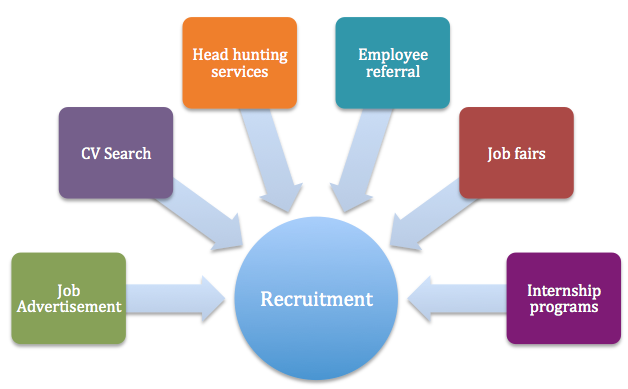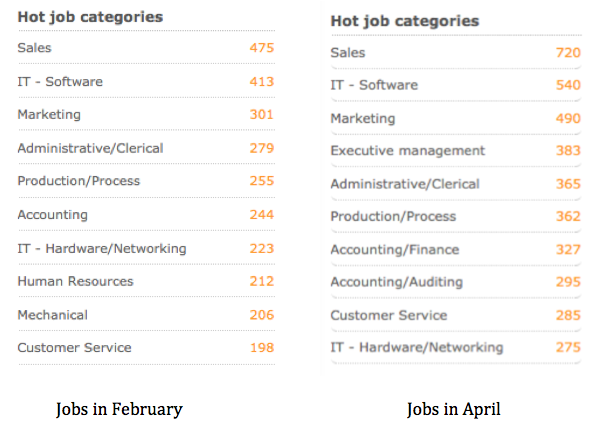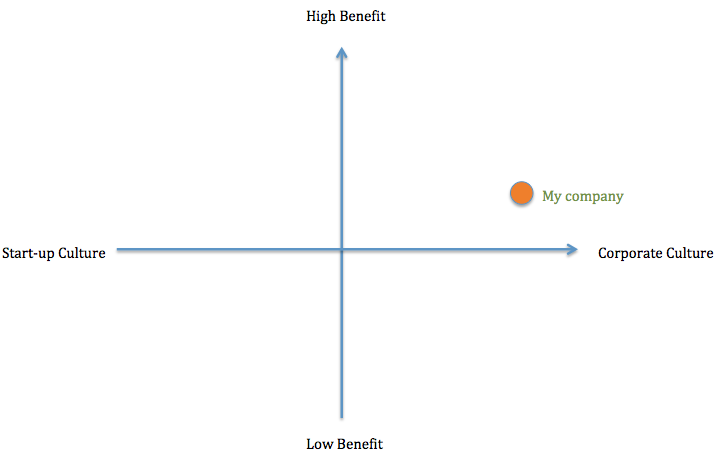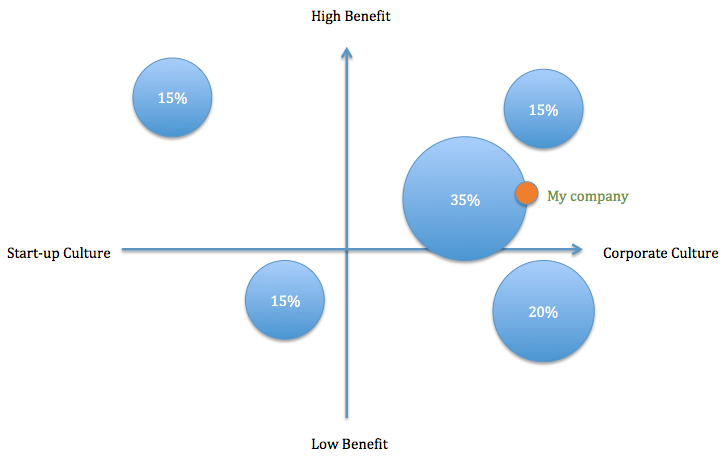In the previous post, job advertisement on such recruitment websites as Vietnamworks can be considered as the most popular and effective recruitment channel in Vietnam. As a result, it is very important to have an effective job advertisement since it usually lead to effective recruitment. By “effective”, I mean the job advertisement is able to attract the “right” candidates, the ones that are desired by the company in terms of their professional skills, mindset and culture fit, to read and apply. In this post, I will share some tips from my own experience that can help to write an effective job advertisement. Even though most of the examples given in post focus on the IT industry, I’m pretty sure that the tips can also be applied in other industries as well.
Tip 1: Appealing title – To click or not to click…

- Instead of just a plain title “.NET Software Engineer”, use something that is more interesting and creative such as “Rockstar .NET Software Engineer Wanted!” or “Talented .NET Software Engineer In Need!”.
- If the fact that our company is a Silicon Valley based company can be considered as an advantage then we can also put that into the title.
- If we have no problem revealing the salary range and we think that it is attractive then it can also be included in the tile.
So, if you are a candidate, which of the following job advertisement’s title is more appealing to you:
“.NET Software Engineer”
or
“Talented .NET Software Engineer Wanted! (Silicon Valley based company, net salary up to 2000 USD/month)”.
Which one will catch your eyes and encourage you to click on?
Again, the rule here is very simple: if the candidates don’t click on our job advertisement, they will definitely not gonna apply to it. So clicking on the job advertisement is the first essential step to get the candidates and this depends mainly on the title of our job advertisement.
Tip 2: Creative introduction – Do you see yourself here?

Having the candidates to click on and open the job advertisement is just the first step to effective recruitment. It is also very important to create a good impression in the introduction of the job advertisement to encourage the candidates to scroll down and read the whole ads. In our case, in order to find employee who are creative and can think out of the box, we need to show that we are also creative and think out of the box too. So instead of a normal introduction starting with some description about the company, we can ask our candidates a series of questions:
“- Do you want to work in an amazing office with professional working environment?
– Do you speak English very well?
– Do you like to gain more experience in cutting-edge .NET technologies?
– Do you like to work with co-workers who can be more talented than you?
– Do you want to see kangaroo and koala bear in real life?
If you answer Yes to those questions then <our company> may be the right place for you.”
This will be more likely to catch the interest of the candidates and if they can see themselves in those questions, it is also very likely that they will read the rest of the job advertisement and apply.
Tip 3: Informative job description – Let us tell you a story about a typical working day here.

In terms of a boring list of bullet points, it is more interesting and also more creative for job description to be in a form of a story describing a typical working day of an employee in the hiring role. For example:
“Long Nguyen, a .NET Software Engineer, starts his working day at 8:00 AM by checking his emails. It is now noon in New Zealand so the Product Owner and the Application Architect, who are located in the Wellington office, have had enough time to send to the team several emails regarding to the new requirements and the solutions that the team just proposed yesterday. After replying to some of the emails, Long uses Lync from his workstation to join the daily Scrum meeting with other Vietnamese and Thai team members. After the 10 minutes daily meeting, Long opens Visual Studio and continues working on his current user story: there are several unit tests that have not been implemented yet. It takes him nearly 2 hours to fully complete the user story with all of the automation tests and does the code review for another team member. Feeling accomplished, Long goes to the pantry room, has a cup of coffee and chit chat with his co-workers in English. At 11:00 AM, Long and his team members go to the video conference room for the Backlog Refinement meeting with others in Wellington and Bangkok offices….”
Tip 4: Highlighted benefits – Why we are better than the others.

This is where we “sell” our company to the candidates by listing out the things that can be considered to be better in our company comparing to others. The longer the list is, the better. The tip here is that there can be a lot of things that can be listed as “benefits” so some brainstorming activities may be required to identify all of them. Here are some examples that can be considered:
- Flexible working hours
- “Work from home” policy
- No working overtime
- Office is conveniently located in district 1 (Yes, that’s right, office location can also be considered as a “benefit” that we can put into the job advertisement)
- Entertainment in the office: mini bar, table tennis, pool table, mini golf, table football, games (Play Station, Wii, Xbox, etc…)
- English speaking environment (From my own experience, it is very interesting that many candidates consider an English only environment as one significant attraction of one company).- Travel opportunity to work onsite overseas
- Overseas company trip
- Good working equipments: MacbookPro, Macbook Air, etc…
- Good vacation policy: 20 days of annual leave and 10 days of sick leave per year
- Attractive incentive system: year end bonus, project bonus
- Salary adjustment twice per year
- Team building activities, sport clubs
- Training programs
Tip 5: A picture is worth a thousand words. A video is worth a million words.

The best way to show our working environment and organizational culture to the candidates is via photos or videos that capture the teams, the office, working activities and company events. A link to a web page that provides such photos or videos will definitely add significant value into the job advertisement. Such job website as Vietnamworks now also supports embedding photos and videos into the job advertisement. So, we should make use of this feature whenever we can.
Generally speaking, these 5 tips can help our job advertisement to differentiate and stand out from the crowd. However, an effective job advertisement is just the first step to effective recruitment, which includes many other factors. It is also noted that the tips are usually more helpful for company that doesn’t have a strong employer branding. Google, for example, doesn’t need these tips to attract talented candidates to read their job advertisement and apply.






